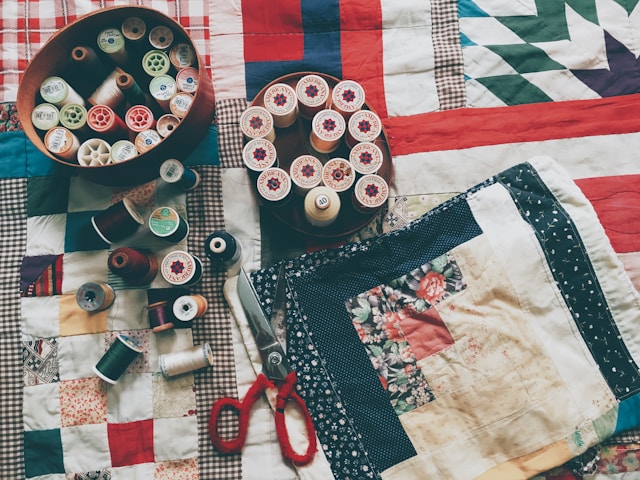- Change theme
Color Theory for Quilters: Picking Fabrics That Pop

Quilting is an art form that utilizes creativity and science.
11:46 04 February 2025
Quilting is an art form that utilizes creativity and science. If you look at the quilts that are in your family, they have intricate designs, precise stitching, and color. Choosing a design and the stitching that is going to be used is the creative art side of your project. Deciding on the colors that will be used, that is where science comes into play.
When piecing together a quilting project, choosing colors and patterns for a quilt can be overwhelming and can bring the creativity of the quilt to a standstill. Implementing the use of the Color Theory will allow quilters to find colors that compliment and highlight the beauty of the quilt that is being designed.
How the Color Theory Works
The Color Theory is based on using the color wheel that is made up of all the colors. Within this wheel are categories that will help quilters determine which colors are to be used. To get started, quilters need to become familiar with the categories of the color wheel.
Colors and Schemes
Colors
- Primary Colors - There are three primary colors: red, blue, and yellow. When mixed together it will create other colors on the wheel.
- Secondary Colors - This is a result of two primary colors being mixed together to create another color (i.e. yellow + blue = green; red + blue = purple).
- Tertiary Colors - Mixing a primary and secondary color together to create another color where neither color is dominant (i.e. red + orange = red-orange).
Hues
- Tint - This is achieved when white is added to a primary color (i.e. red + white = pink).
- Tone - By adding grey to a primary color, you will get a tone of the original color. The amount of grey that is added will determine if a color is more or less saturated.
- Shade - When black is added to a primary color, you will get a shade of the original color (i.e. blue + black = deep indigo)
Schemes
- Monochromatic - This is using all tints, tones and shades of one color. This can be as expansive or limited as the quilter would like. For instance, the possibilities of blue are endless. From the sea to the sky and every blue in between.
- Analogous - This scheme is using colors that are next to each other on the wheel. This can encompass two or three colors, or even the colors in between. The quilter will need to refer to a color wheel to determine which sect of colors they would like to use.
- Complementary - These colors are located opposite each other on the color wheel. They reflect the differences in each other, yet bring out the best as well. Examples of complementary pairs are: red & green or blue & yellow.
Picking Colors that Pop
Choosing the perfect color for your quilt can seem daunting and extremely overwhelming. There are so many colors to choose from that it may seem impossible to bring your quilting vision to life. However, utilizing the color theory will help you decide what colors will complete the look. Remember, color is the creative backbone to your quilt.
